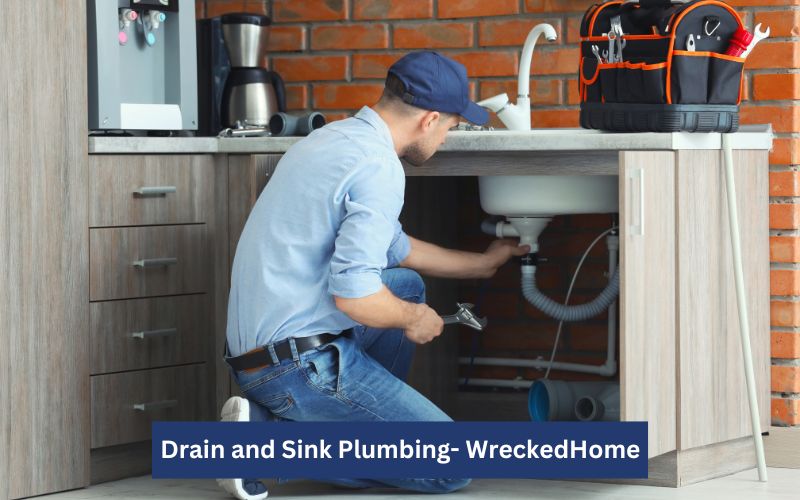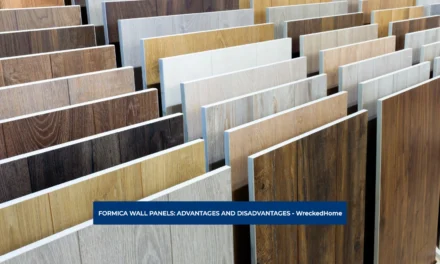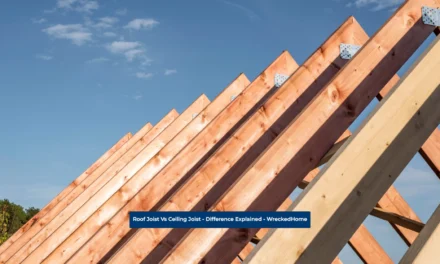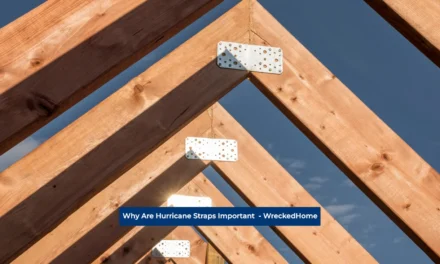How the systems underlying in our homes work are always hidden in front of many people. All these systems are necessary for the proper functioning of our homes and commercial spaces. Draining systems and sinks, either bathroom or kitchen are always important in a house but get less attention as compared to other things.
Although on superficial basis, drain and sink plumbing looks very simple but, in actuality, it is a complex network of pipes, traps, and vents whose overall function is to deliver clean water to users and then take wastewater safely away from homes.
Moreover, another big function is maintaining hygiene conditions and preventing disasters like water damage or pipe explosions. So, knowing about drain and sink plumbing is necessary to further understand the system and fix small problems. Let’s see what sink drain parts are, how the system works, and why we need to know about it.
What Is Drain And Sink Plumbing?
Before discussing what is drain and sink plumbing, and what sink drain parts are, let’s see what these terms actually mean.
- Sink: You see a sink in your kitchen and bathroom or even in utility areas. Their main function is to provide basins for washing hands, kitchen utensils or even clothes. When it comes to style and material, they are in wide range of availability like bathroom sinks, kitchen sinks, and utility sinks.
- Drain: its main function is to drain wastewater out of home or building. Its opening or fixture which collects used water from the sink and gives it a safe exit. You can see one at the bottom of sinks, while drain plug or stopper, which basically controls water flow are two of the sink drain parts. When it comes to design, they are made to give path for wastewater to main sewer line, thus allowing it to pass through it easily while preventing solid debris from entering plumbing system.
- Plumbing: Plumbing here is just pipes, fittings, and fixtures of your drain sink system, whose main function is to transport fresh water to sink through tap and take it back through draining system outside the house or building.
In actuality, the drain and sink system is an important part of the plumbing system because it keeps homes safe by draining wastewater outside rather than backing up or accumulating in homes. Thus, preventing sewer gases from entering homes and causing damage.
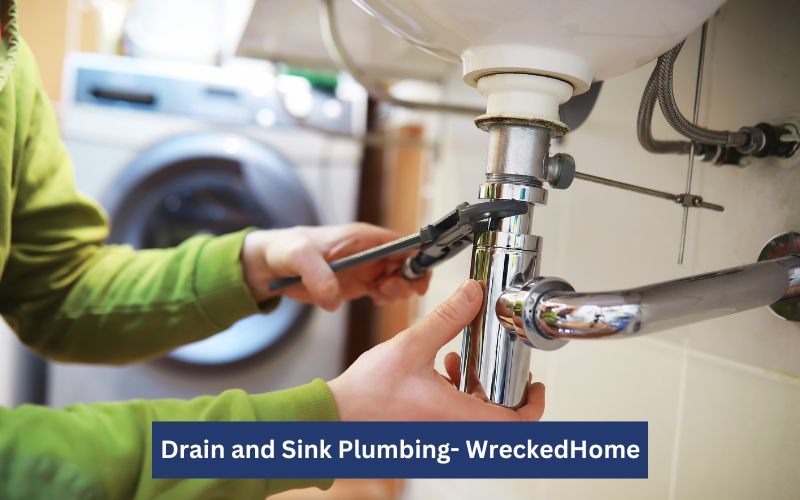
Why Is Drain And Sink Plumbing Important?
Drain and sink don’t allow water to back up in sinks; if it comes back it will create mess and spread bacteria thus, a complete health hazard. By keeping your residence or building sanitary and disposing of wastewater you keep the germs and Bacteria away and prevent their growth and spread.
As sewer gases are harmful the system prevents entry of these gases into homes and protects residents from headaches, nausea, and vomiting. Sink drain parts have traps and vents that don’t allow clogging or blockages and keep the wastewater moving freely.
In this way, the drain and sink plumbing prevent water damage. Moreover, a proper and efficient drain and sink plumbing adds value to your home or property.
What Are Different Sink Drain Parts?
- Sink Drain Opening: The bottom of sink has a visible opening known as sink drain opening. It allows water and waste to flow from sink to drain.
- Drain Stopper or Plug: it is one of the moveable sink drain parts. You can open and close it to control water flow.
- Basket Strainer: The drain opening opens in a basket strainer which is removable. It collects the solid debris and doesn’t allow it to move into drainpipe and cause clogs. The small perforations in it allow only water to pass through.
- Strainer Gasket: It is a rubber or silicone gasket and its function is to seal the strainer to sink. Thus, it doesn’t allow water to leak from the edges around strainer.
- Locknut: its position is underneath and function is to create a watertight seal. It secures the strainer to sink from inside.
- Tailpiece: it is a straight piece of pipe and one of important sink drain parts. To carry wastewater from sink to drain this piece connects with the strainer’s bottom and overall drain system.
- P-Trap: It’s a U-shaped pipe and is connected to tailpiece. It is one of the most important sink drain parts as it traps a little water due to its different shape. That little water forms a seal which stops sewer gases from entering the house and maintaining indoor air quality.
- Trap Arm: It’s a horizontal pipe between P-trap and vertical drain pipe in the wall or floor. It allows water to move away from the sink.
- Wall Bend: For smooth transmission of wastewater, it is done by wall bend. Through a curved pipe whose main function is to flow unwanted water connects the trap arm to the vertical drainpipe in the wall.
- Vent Pipe: You will see many plumbing systems, where the pipe extends vertically and joins drainpipe to building roof. This pipe plays a lot of functions like air entry into drain system, where it prevails suction, maintains proper pressure, and facilitates the flow of wastewater.
- Clean out Plug: it is a removable plug or cap that the plumber installed at strategic points in your drain system. Its main function is to provide access to clean and clear blockages.
- Drainpipe: It’s a main vertical or horizontal pipe. Its main function is to take wastewater from sink to building’s sewer line or septic system.
How a Sink Works
When it comes to sink working there are several components that come together for proper functioning of sink. Some components are
Water inlets and Taps
This component is responsible for bringing water to bathrooms and availability of water is possible from main or external supply of water. Shut-off valves, either one or two, are added to your bathroom sinks in the first place and in close proximity.
The tap tails are connected to these valves and allow water to flow toward your sink. Not only this, the valves can also be shut off in need like during plumbing work, finding leaks or damages in any sink drain parts.
As a general information, the valves allow water to move toward water supply tubes, more commonly known as tap tails and then toward taps. Taps are also considered as stop-valve because they also stop water, hold it, and then release on turning on. Thus, they don’t allow water to move and fall freely in sink.
So whenever you need water you have to turn on your tap’s handle, which puts pressure on washer, open the valve, and allow water to move out of tap into the sink.
Visit our store for 10% off our Cleaning Products here.
Cold water and Hot water
You will get both hot and cold water in your sink from different taps. The cold water mainly comes from external water supply, while the hot water is provided by your home water heating system. When you open the tap, you will get the water which you want and in the required quantity.
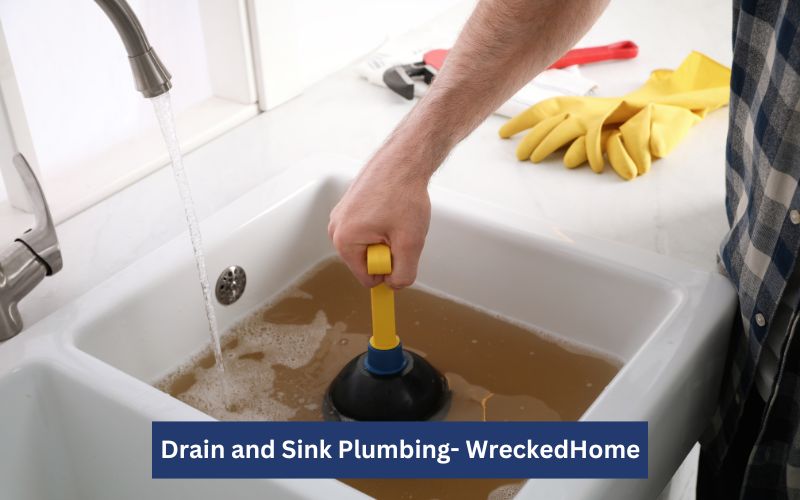
How a Drain Works
Though we have discussed the detailed working process of drain in the sink drain parts, here we have just given a glimpse.
The overall drain system works on the basis of Gravity which compels wastewater to move from a higher position from sink to lower position into the drain. The water from taps falls down in the sink, then after passing through strainers, it flows to angle downward drainpipe.
The pipe’s angle allows water to flow down further and fall into U-shaped trap which keeps a small amount in it to create a seal. This seal is helpful in preventing sewer gases from coming back toward sinks.
The rest of wastewater goes into tailpiece while the vent pipe here efficiently allows air to move into the system only to prevent clogging. The wastewater thus enters drainpipe and finally falls into the sewer line (PVC pipe) which takes this this waste and water away from your house.
We hope that now you have completely understood the sink drain parts and their plumbing work.
Problems with Sink Drains
The problems that your sink drain or sink drain parts may face are many, but here we have discussed the most common ones.
- The clog may occur due to the accumulation of various things like hair, food particles, or grease.
- Clog is one cause of slow draining but mostly the reason is soap scum or any other debris buildup.
- If there is a problem with your vent pipe or clogging occurs in sink drain parts, you will hear popping or gurgling noises from fixtures.
- If you constantly smell sewer gases, it means your system is not working efficiently, which may be due to any clog or leakage in pipes. Never leave this fault unattended.
- If your sink drain system pipes get cracked and broken due to any reason or by a loose connection then you should have to handle leaking drain issues.
How To Solve Problems with Sink Drains
The problems are many and may come with solutions. Just remember that clogging in drain may reverse action and cause flooding and damage to homes and buildings. In case of slow drain, bacteria start breeding and cause health issues. To fix these issues you can use plunger or drain snake. The second option is to call a plumber.
How to Prevent Issues with Sink Drains
If you want your sink drain parts always working efficiently you should do regular maintenance. You can clean drain traps or lines at the interval of few months. Never put grease, oil, or fat in sink as it goes to drain, solidify there, and cause clogging.
Use strainers in your kitchen that collect food particles and debris and allow only water to move into drain. You can also pour warm or boiling water into your sink once a week.
This warm water will dissolve grease and food particles if they by chance go and build up in the drain. Some people use chemical drain cleaners but remember that they are harmful to your drain pipes so we recommend don’t use them.
Conclusion
Drain and sink plumbing is an essential topic not only to discuss but also to understand. Your home hygienic condition is based upon it and any defects in the system or sink drain parts can cause disastrous damage. We hope that our detailed guide will help you to understand the sink and drain plumbing and help you in keeping them in better condition.
For any repairs, installations, builds, or questions; We recommend you to hire a professional. Find A Pro Near You Here!

